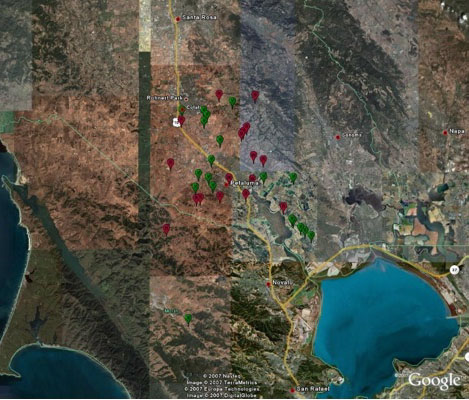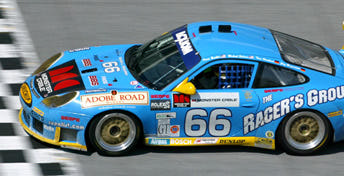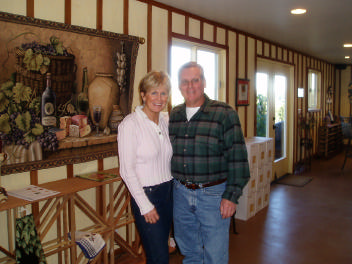Petaluma Gap: Fog Noir
I remember it well and it was very striking. In late December, I was driving south on Highway 101 in Sonoma
County on a brisk, clear morning about 8:00 AM. I had some good Doo-Wop music going and a cup of coffee in
hand. Just before I reached Petaluma, I came upon almost a surreal picture. There in front of me was a dramatic
fog bank blotting out the blue sky, with hazy fingers stretching east just over Highway 101. At 75 milesper-
hour, I was through it in no time, but right then I had an understanding of the Petaluma Gap.
The so-called Petaluma Gap, a term coined as recently as ten years ago, refers to a narrow opening in the
southern Sonoma County countryside connecting the ocean near Bodega Bay and Tomales to the San Francisco
Bay. It is roughly 22 to 31 miles in width with walls rising roughly 2,000 to 3,000 feet from the valley floor. The
western edge runs approximately from Tomales to Bodega. The southern border is Nicasio and the north and
east border starts around Penngrove/Cotati and runs southeast along the Carneros Ridge ending in San Pablo
Bay. On the map below, Bodega is a few miles inland from Bodega Bay and Tomales is just east and south of
Dillon Beach. The tiny town of Nicasio is a few miles east of where the Highwat 1 marker is on the map. San
Pablo Bay is the body of water bordered on the north by Highway 37. I have tried to roughly outline the region.
In the simplest of terms, it can be thought of as the area south of the Russian River Valley to Mt Tamalpais.
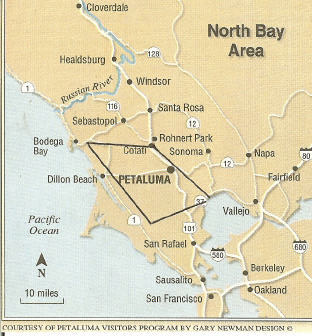
The Petaluma Gap possesses a very unique microclimate. Early morning ocean fog is followed by
intense midday heat with cooling Pacific breezes in the early afternoon moderating the heat and leading
to very cool evenings. Warren Henderson of Windy Hill Winery notes that “The cool ocean air is
drawn into the Bay Area by the rising air of the Central Valley of California. This tube of cooled air
moderates the temperature of the surrounding hills providing a cooling effect that lowers the ambient
temperature by up to 15 degrees compared to the rest of the county.” The area has been compared to
Carneros which is under the same climatic influences, but the fog and wind arrive earlier in the day
than in Carneros and stay longer the next morning. Rainfall is moderate (20-24 inches) so that irrigation
is required for at least part of the growing season. The climate is ideal for growing cool climate
varietals like Pinot Noir and Chardonnay, and there has been some success with several other red
varietals such as Syrah and Merlot.
Bob Peak, partner in The Beverage People, describes the region’s climate as “resembling other cool
areas like Carneros. In addition, the almost-every-night breeze takes us (Petaluma Gap) one further
step beyond the cool, foggy mornings of similar areas. I think the rapid chilling of the ripening fruit
helps maintain crisp, refreshing levels of acidity in our grapes all the way to full physiological maturity.
The resulting bright, fruity flavors and aromas make many of our wines stand out from others.
They can be fully ripe, but have zippy, spicy characteristics in addition to rich fruit flavors.” Mark
Pasternak, owner of Devil’s Gulch Ranch in Marin County, has consulted on some of the new vineyard
plantings in the Petaluma Gap and is quite familiar with the challenges of cool-climate viticulture. He
says about the region: “It is very similar to much of the areas with vineyards in Marin County. Both
areas have a very ‘site specific’ character to them, where there can be substantial differences in
warmth depending upon sun and wind exposure, even within a single vineyard. Some areas of the
Petaluma Gap (Tomales, Bloomfield) and Marin (Marshall, Nicasio) are as cold, or even colder than
Green Valley (or Freestone, the true Sonoma Coast, Santa Lucia, Santa Maria, and Lompoc). Much of
both areas (Chileno Valley, San Antonio Valley, Novato, Pengrove/Cotati, Lakeville) are on par with
the Russian River Valley and Carneros areas.”
Paul Clary, owner and winegrower at Clary Ranch in the Petaluma Gap region relates a funny story
about the area. Several years ago, he was enrolled in a class in viticulture at Santa Rosa Junior College
taught by the esteemed Sonoma County viticulturalist, Rich Thomas. At one class, a guest lecturer proclaimed
that “a grape would not ripen west of the Petaluma Firehouse.” He sneered at wines from
Carneros. When asked about vineyards in Marin County such as Corda, Stubbs, and Devil’s Gulch, he
proclaimed no awareness and no interest. Rich Thomas, on the other hand, felt that the area west of
Petaluma was just waiting to be discovered. As we fast-forward a number of years, it is clear that
grapes WILL ripen west of the Firehouse and not only ripen, but produce outstanding wines.
Currently there are about 1,000 acres of vineyards planted in the Petaluma Gap. Many of these vineyards
are on former chicken or dairy ranches. The Petaluma Gap region is not a separate appellation,
but sits within the very large Sonoma Coast appellation. Pinot Noirs from this area are currently
labeled as “Sonoma Coast,” but the “Petaluma Gap” designation will probably be added as well in the
near future as the area becomes more well-known. Only four wine tasting facilities exist at present
(Adobe Road, Corda, Kastania, and Keller Estate), but the area is booming and is estimated that by
2020, there will be at least 10 wine tasting rooms and numerous new producers. As Franc Dusak, winemaker
at Adobe Road Wines said, “This area is very similar to the Santa Cruz Mountains where Pinot
Noir grows very well and I am sure the Petaluma Gap is a sleeper region that will get much recognition
in the years to come.”
Petaluma Gap Grape and Wine Alliance
With the goal of promoting the Petaluma Gap as a microclimate within the Sonoma Coast with its own
regional identity, the Petaluma Gap Grape and Wine Alliance was formed early last year. This
began with a few prominent Petaluman businessmen and winegrowers such as Timo and Frances
Rivetti (who farm a ½ -acre vineyard and produce Que Syra Syrah) and Barry Singer (owner of Barry
Singer Gallery in town who makes six barrels of wine each year at home) along with Christopher Sawyer
and Jason Jenkins (co-owners of Vine & Barrel wine shop in town). The Alliance is now composed
of over 20 members and will hold its first group meeting on January 16, 2007. Members range from
producers of only a few barrels of wine annually to Keller Estate, which releases 11,000 cases each
year. The president of the Alliance is Jeff Maddux (jeff@petalumagap.com) and the Alliance website is
www.petalumagap.com.
The current list of notable Pinot Noir wineries (many are not bonded) and vineyards include the following
(starred wineries are featured in subsequent pages). Only those wineries and vineyards producing
wine and/or growing grapes commercially are included.
Adobe Road Winery* (5,000 cases, multiple varietals)
Armagh Vineyard (11 acres Pinot Noir)
Azari Winery (5 acres, Pinot Noir and Syrah)
Bush-Field Estate Vineyards & Winery (5 acres Pinot Noir)
Clary Ranch* (15 acres Pinot Noir and Syrah, 150 cases own label Pinot Noir)
Cline Cellars
Copeland Creek Vineyards* (15 acres multiple varietals, few hundred cases of Pinot Noir)
Corda Winery (35 acres of Pinot Noir and other varietals, 1,500 cases several varietals)
Corona Creek Vineyards (10 acres Pinot Noir)
Devil’s Gulch Ranch (18.5 acres, Pinot Noir, Chardonnay, Gewurztraminer)
Griffin’s Lair Vineyards (20 acres Pinot Noir and Syrah)
Herrerias Cellars (6 acres Pinot Noir)
Kastania Vineyards* (5.3 acres of mainly Pinot Noir, few hundred cases of Pinot Noir)
Keller Estate* (86 acres of multiple varietals, 11,000 cases of multiple varietals)
Koos Family Vineyard (2 acres Pinot Noir)
Peak Family Vineyards (.33 acres Pinot Noir, Chardonnay, Petite Sirah)
Ridgeway Family Vineyards* (8 acres Pinot Noir, 274 cases Pinot Noir)
Stubbs Vineyard (11 acres Pinot Noir and Chardonnay)
Sutton Cellars (3,500 cases of multiple varietals including Pinot Noir)
Terra De Promissio Vineyard* (32 acres Pinot Noir)
Windy Hill Winery (36 acres Pinot Noir, 1,500 cases Pinot Noir and Chardonnay).
Partners Jason Jenkins and journalist/sommelier Christopher Sawyer opened the first dedicated wine
retail shop, Vine & Barrel, in Petaluma in November, 2006. They feature over 2,000 wines in 3,500
feet of cellar space. There is an extensive collection of top wines from Sonoma, Napa and Europe, but
the wines of the Petaluma area are featured. Local winemakers visit frequently to conduct tastings and
all of the Pinot Noirs from the region are for sale. The store is located in downtown Petaluma at 143
Kentucky St. The website is www.vineandbarrel.com.
I tasted through a number of Pinot Noirs from the Petaluma Gap and was very impressed by most of
the wines. The quality is consistently high with generous sweet fruit flavors, silky textures, and lively
acid profiles that bode well for the dinner table. This area will not be a sleeper for long.
Jeff Maddux provided me with the maps on the following pages showing the location of the wineries
and vineyards around Petaluma. “V” = Vineyard, “W” = Winery, and “B” = both Vineyard & Winery.
The exact boundaries for inclusion of members of the Petaluma Gap Grape and Wine Alliance have not
been determined. Some of Marin County vineyards definitely fall within the Petaluma Gap (Corda,
Stubbs, Kendric) and probably also McEvoy, Chalone, and Devil’s Gulch Ranch. The Gap Alliance will
be like Carneros in that it straddles two counties.
Mark Pasternak tells me there is MUCH interest in the area by winemakers. Jamie Kutch, Pax Mahle,
Dave Vergari, and Thomas Fogerty are a few of the “new hounds in the race.”
In the following pages I have highlighted a few of the wineries I recently visited and/or of particular
interest. I have included tasting notes of recent releases.
Adobe Road Winery
Owners Kevin and Debra Buckler wear many
hats. He and his wife, Debra, are owners of
Adobe Road Winery, he is a renowned sports
car racer, and together they run one of racing
sport’s most successful businesses, The
Racer’s Group (TRG). Kevin founded TRG in
1993 and by 2003, he had won every major
endurance race in the world in the GT class
including the Rolex 24 at Daytona, the 24
Hours of Le Mans, and the 24 Hours of
Daytona. TRG also manufacturers racing parts
and takes aspiring drivers and racing enthusiasts to major racing tracks for experience.
For what is now a familiar story for winemakers, Kevin started making wine in his garage. His early
efforts were admired by friends, and together with Petaluman winegrower Ron Herrerias, started the
Adobe Road label. Commercial success was quick to follow with the 2002 Adobe Road Winery
Herrerias Vineyard Sonoma Coast Pinot Noir taking a Gold Medal and “Best of Class” at the 2004 San
Francisco Chronicle Wine Competition. Kevin and Debra Buckler are now the sole owners of the winery
and Ron Herrerias bottles his own Pinot Noir from his vineyard in the Petaluma Gap. A number of
varietals are produced from select vineyards in Sonoma County. The current winemaker is Franc
Dusak.
2004 Adobe Road Herrerias Vineyard Sonoma Coast Pinot Noir
14.3% alc., 246 cases, $35.
Winemaking here is traditional for California Pinot Noir. Aging was carried out
for 19 months in 50% new French oak.
·
This wine is one fine cherry bomb.
Scrumptious ripe cherries in the nose and on the palate with a hint of spice and
herbs. Light to medium in body and elegant in style, this Pinot finishes with a
lively kick of acidity and a lingering note of sweet oak. Hi-octane.
Adobe Road Winery tasting room is open by appointment (707-939-7967).
This has to be one of the only tasting rooms in the world where you can sip
Pinot while gazing on the world’s fastest Porsche racing machines. Adobe
Road wines are available on the website at www.adoberoadwines.com and
have some retail distribution. Sign up for the Adobe Road Newsletter as well as
the Inside Track Wine Club on the website. The winery’s other varietals, including
Cabernet Sauvignon, Petite Sirah (Double Gold at Sonoma Harvest
Fair), Zinfandel, Cabernet Franc, Syrah, and Sauvignon Blanc are also stellar. The winery is located
at 1995 S McDowell Blvd. Extension, Petaluma.
Armagh Vineyard
Armagh (‘ar-ma’) Vineyard is an 11 acre site in the Petaluma Gap consisting of 6 acres of Pinot Noir, 4
acres of Chardonnay, and 1 acre of Syrah. The vineyard is owned by Jim and Gayle Crayne and is
named after County Armagh in Ireland, the home of the owner’s ancestors. The family has farmed the
Sonoma Coast region since 1894. The Pinot Noir grapes are sold to Savannah-Chanelle and CL Wines,
both of which produce a Armagh Vineyard- designate wine.
2004 CL Wines Sonoma Coast Pinot Noir
14.1% alc., $21. CL (Cravin and Lattin) Wines
are crafted by David Lattin, former winemaker at Acacia. Three single-vineyard Pinot
Noirs are produced: Armagh, Doucette, and Griffin’s Lair. The Sonoma Coast bottling,
tasted here, is a blend from the single-vineyard selections. The Sonoma Coast Pinot
Noir is a very popular by-the-glass pour at many top Northern California restaurants.
·
This is a perfectly fine Pinot Noir. It leads off with aromas of fresh crushed cherries and
carries the cherries theme to the finish. There is a touch of heat on the nose but it is not
intrusive. The texture is soft and the finish clean. Like sharing a cherry float with a cheerleader
in a fuzzy red sweater.
The CL Wines are not easy to find. Root’s Cellar in Healdsburg carries the wines regularly (866-808-
0124, www.rootscellar.com).
Clary Ranch
Paul Clary’s agricultural background is in walnuts, but he has been able to transition to grape growing
and winemaking quite nicely, albeit with a number of struggles. He grew up helping his grandparents
farm their walnut orchard in El Dorado County. While attending University of California Davis, he majored
in Biological Sciences, with an emphasis in Botany. He never actually ventured into viticulture or
enology classes while there. In later years, when he decided to embark on his winegrowing adventure,
he felt it a was a natural choice for him since a vineyard is something of an orchard in miniature.
He purchased an old dairy ranch in the “Sonoma-Marin” area, at the headwaters to Chileno Creek
about 11 miles east of Tomales Bay, and began the job of restoring the land. It had been abandoned
for 25 years, the barns were dilapidated, the farmhouse was a “bulldozed pile of rotting lumber,” and
beef cattle grazed freely over the spent pasture. Paul says he can date the time that the ranch was last
a going concern by the discovery of a pull-tab soda can embedded in the dried accumulation of manure
that filled the feed troughs in the largest of the dairy barns. It had been a long time since the
troughs were filled with hay. He rebuilt the barns, installed an old mobile home scrounged from Dry
Creek Valley, fenced the ranch, and began to prepare for planting.
He decided to plant Pinot Noir and Syrah with the advice of his cousin, Mark Bailey, who has been a
vineyard manager in Sonoma County since the early 1970s. He figured that the Syrah was the riskier
grape of the two, but worth exploring in the cool climate. Pinot Noir had a built-in “Plan B” by virtue of
being suitable for sparkling wine if it didn’t ripen sufficiently. As Paul put it, “I plowed ahead with
more enthusiasm than cautious good sense.” He had many doubts including that even if he was successful
growing grapes in this cool climate, would anyone buy such an unknown quantity?
The topsoil was from 2 to 6+ feet deep and was very slightly acidic. He spread lime, rock phosphorus,
potash, and a generous helping of compost, which was ripped to a depth of 4 feet by a D8 Cat. Green
bench grafts were obtained. A tall VSP trellis was chosen which gave the option of training to a Scott-
Henry system if vigor warranted it. He put the guide wire 42 inches off the ground to minimize stoop
labor. A total of 15 acres were planted.
Following his plantings, he enrolled in a University of California Davis winemaking extension course
and was on his way. He offered his initial wines to potential buyers to taste, but poured them nervously,
asking the buyers to “look past novice winemaking errors and try to taste the grapes.” Fortunately
he found buyers for the grapes. He entered his wines into the Sonoma County Harvest Fair and
his Pinot Noir won a Silver Medal and Syrah a Gold Medal and was in contention for Best Red Wine!
A number of years passed and Paul continued to sell the bulk of his grapes, making a small amount of
garage wine. He suffered through a divorce, but managed to keep his four kids on track. By the end of
the 2004 growing season, he had more grapes than buyers and decided to make a commercial Pinot
Noir. He crafted the wine at Topolos Winery in Forestville. This was a true hands-on effort as he had
little help available. He bottled the wine in a pouring rain after it spent 14 months in 50% new French
oak. The 2004 Clary Ranch Grower’s Reserve Sonoma Coast Pinot Noir was finally released in August
of 2006. I tasted it at Pinot Days in San Francisco in June of last year and was impressed. So was the
Wine Spectator, which awarded it a 91 score. Call it beginner’s luck if you will, but the fact is Paul had
nurtured a vineyard for years in what turned out to be an ideal location for Pinot Noir, and the resulting
high quality of grapes gave him the raw material for success.

2004 Clary Ranch Grower’s Reserve Sonoma Coast Pinot Noir
14.9% alc., 150 cases, $50.
·
This
Pinot is made in the full-bodied style so popular in California. I tasted the wine briefly at the recent Pinot
Days Festival. The winemaker’s notes are probably most helpful: Aromatic, complex, and intense, with
a luscious long-lasting finish. Dark and concentrated, yet well-balanced, with good acidity and a healthy
tannic backbone.
Clary Ranch Pinot Noir and Syrah can be purchased on the website at www.claryranch.com or by
phoning Paul at 707-773-3884. The wines are also placed in a number of top Bay Area restaurants. The
ranch is located at 3641 Middle Two Rock Rd., Petaluma, CA 94952.
Copeland Creek Vineyards
Most of the regular readers of the PinotFile know that I am a fan of Don Baumhefner’s beautifully
crafted Sonoma Coast Pinot Noirs and they have made my annual North American All-American list
two years in a row. Details about Don and his wines have been presented in several past issues.
2004 Copeland Creek Sonoma Coast Pinot Noir
13.5% alc., $30.
·
A medium bodied
Pinot Noir of great breeding. Cherries, plums, nutmeg, cinnamon and
sweet oak aromas draw you in. Red fruits dance on the palate and that telltale
spicy cherry finish that Copeland Creek is known for lingers forever. A beautifully
balanced wine of great complexity and elegance. Pick any superlative you
wish.
Copeland Creek Vineyards is located at 765 Baywood, Suite 147, Petaluma,
CA 94954. Wines may be ordered by phone at 707-765-5750, or online at
www.copelandcreekvineyards.com. The 2003 vintage is equally good and
still available. The prices are ridiculously cheap for the quality and Don even
gives a 10% discount for orders of 6 bottles or more.
Kastania Vineyards
What a pleasure it was to visit owners Hoot and Linda Smith at their new winery at Kastania Vineyard.
They are very gracious and warm wine enthusiasts who have launched their own label Pinot Noir for
the 2005 vintage. The vineyard is on land owned by the Smith family since the1860s. Originally it was
a very large ranch extending east of the Petaluma River, but was gradually sold off. The plot that
remains is quite beautiful, studded with majestic oak trees that are a few hundred years old (see
below) and overlooking the eastern portion of the Petaluma Gap. The vineyard sits on a knoll adjacent
to Highway 101 (you have probably driven by it without knowing many times). The picture below
shows the view out the back doors of the winery overlooking the Kastania Vineyard, with the Petaluma
River in the far distance.
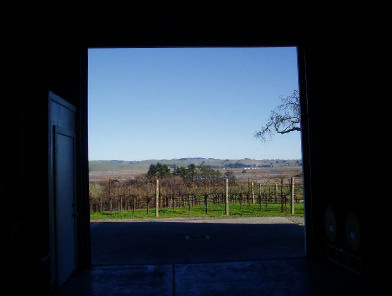
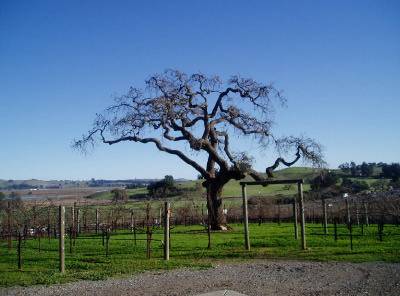
Hoot is an auto and diesel electrical expert who operates his own business on the property adjacent to
his home. His wife of many years (I forgot the exact number but it was quite a few), told me she
collected owls before she met her husband, and “ended up marrying a “hoot.” The owl takes a
prominent place on the winery’s label. The couple are pictured below in their attractive tasting room.
Hoot planted his 5+ acre vineyard in 1995 primarily to Pinot Noir with Pommard 4, 667, 115 and Calera
clones. The Calera clone has never performed well here and he is replacing it with a Rochioli Vineyard
selection. For 8 years, Kastania supplied grapes for a vineyard-designate Pinot Noir made by
Landmark Vineyards in Kenwood. Beginning with the 2005 vintage, he is keeping the grapes for his
own label Pinot Noirs. The Kastania winemaker is Leslie Cisneros.
I asked about the name “Kastania” and it turns out the word means “chestnut” in Italian. It just didn’t
seem right to name the winery “Smith” Hoot told me.
The new winery is nicely sized and very clean and compact (see below). We tasted through some
barrel samples of individual clones (Pommard, 667, and 115) which is always interesting. I sampled
the two 2005 Kastania Vineyard Pinot Noirs both at the tasting bar and at home after the visit.
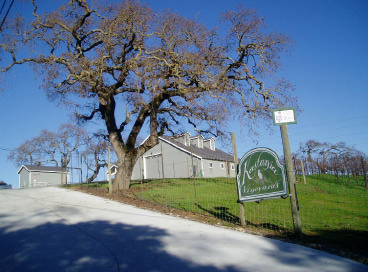
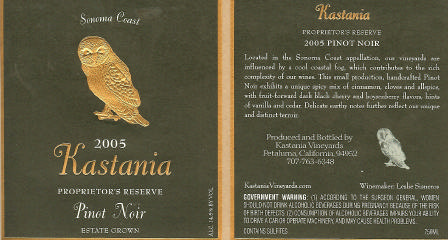
2005 Kastania Vineyards Sonoma Coast Estate Pinot Noir
14.5% alc., not yet released-possibly
February, 2007. The wine is still a bit closed and
·
The perfume offers cranberries, raspberries,
and strawberries with a skosh of alcohol. The same fruits are featured in the flavors. The texture is very
silky and the finish is lively. Great potential here.
2005 Kastania Vineyards Sonoma Coast Estate Proprietor’s Reserve Pinot Noir
14.5% alc. early
2007 release.
·
More plush, more power, more Pinot than the above wine. Give it 6-12 months and it will
launch you toward heaven. The wine has a sweet scented nose of decadent warm spiced cherry pie.
Waves of spicy, tenacious red and black fruits cascade on the palate with a richness of flavors that shows
off California’s flashy potential. The texture is cozy and velvety. You’ll want to chew on this one.
Kastania Vineyards is located at 4415 Kastania Road, Petaluma, CA 94952. The winery’s tasting room
is open by appointment (707-763-6348). The wines will be available directly from the winery when
released. The website is www.kastaniavineyards.com. I recommend cellaring the two Pinot Noirs for
at least 6 months before diving in.
Keller Estate
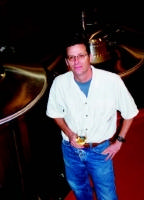
Arturo Keller’s interest in wine began modestly, with him making wine originally for just his friends
and family. His continued passion for wine led him to purchase 500 acres in
the southeast corner of Sonoma County on the eastern edge of the Petaluma
Gap. With the assistance of noted viticulturalist and winemaker Ted Lemon,
86 acres of vines were planted with 9 different clones of Pinot Noir, 4 clones of
Chardonnay, and 2 clones of Syrah. Lemon helped with the selection of plant
material and the layout of the vineyards. The location of the La Cruz Vineyard
is 20 miles from the Pacific Coast, but the fog reaches the vineyard on many
days. A modern winery was built under the direction of well-known architects
Victor and Ricardo Legorreta. The walls of the winery are crafted from ancient
limestone from the 3 Gorges Dam project in China. The first vintage was 2003.
Current winemaker is Michael McNeill whose experience includes stints at
Chalone, Sylvian Ridge in Oregon, and Savannah-Channelle in the Santa Cruz
Mountains.
2004 Keller Estate La Cruz Vineyard Sonoma Coast Pinot Noir
14.3% alc.,
$30.
·
This Pinot Noir is darn near perfect. The nose is sweet-scented with violets,
crushed cherries and a hint of oak. It is soft as a down pillow and the flavors
deliver the whole Pinot experience. Nicely balanced. Maybe the mid palate and
finish could have more oomph, but this is being picky. This Pinot was especially
good with grilled King salmon with green goddess sauce.
Keller Estate is located at 5875 Lakeville Hwy. Special tours, barrel tastings, and events can be
arranged by phoning the winery at 707-765-2117. The wines can be purchased on the website at
www.kellerestate.com. They also enjoy fairly wide retail distribution. I have been told that there is
also an extensive collection of vintage cars at the Estate.
Ridgeway Family Vineyards
Mike and Teela Ridgeway have really exploded onto the Petaluma Gap Pinot scene with their first
release. Teela is a vivacious and energetic women who, along with her two dogs, gave me a tour of
the beautifully situated vineyard in the Petaluma Hills just west of town. Teela is a third generation
Petaluman. When she met Mike seven years ago, he was commuting to San Francisco to his chiropractic
practice while farming a vineyard on Sonoma Mountain Road near Bennett Valley. Mike had been
growing red varietals, primarily Merlot, there for nearly 20 years, and his knowledge of viticulture led
him to think that the Petaluma Gap was a perfect area to grow Pinot Noir. The two of them searched
the area for an appropriate property and found an ideal 20-acre estate for their vineyard.
With the assistance of Mark Pasternak, they planted Dijon clones 557, 777, 828, and Pommard clone on
8 acres in the rolling hills west of the property’s home in 2001 (see photo). Even with Mike’s grapegrowing
experience, the task presented several challenges. After they moved into the house on the
property, they discovered that the well could not provide enough water to irrigate the just-planted
vines. They had to move out of the house so as not to utilize any water in their residence, and had to
drill a new well. Gophers have been omnipresent and Teela showed me deer tracks in the vineyard
that indicated deer had leaped the five-foot fence enclosure around the vineyard.

Besides handling the marketing and sales chores for their new venture, Teela has planted olive trees
on the property as well and plans to make olive oil for fun. Nearby McEvoy Ranch has a milling facility
where the olives can be milled for oil. The small number of trees would probably never make the
undertaking profitable, but this is her pet project and she takes great pride in it.
The Ridgeways were fortunate to team with talented winemaker, Dan Goldfield (Dutton-Goldfield
Winery), who made the first Ridgeway wine at the Dutton-Goldfield facility in Santa Rosa. The inaugural
2004 vintage comes from the first grapes harvested at the vineyard. The 2004 release received a
warm reception, several restaurants have placed the wine on their lists, and the renowned Cyrus Restaurant
(Michelin 2 star) in Healdsburg, poured the wine by the glass, going through three cases every
two weeks! Coincident with the release of their first Pinot Noir, Mike and Teela were married in June,
2006. Both Pisces, they naturally named their vineyard, “Two Pisces Vineyard.”
Mike likes to say that during the warm summer months, the grapes are “kissed by the breath of the
sea” each evening. When I asked him about his quick success, he simply smiled and said, “I know
how to grow great grapes.” He plans to increase production to around 800 cases in a few years.
2004 Ridgeway Family Vineyards Two Pisces Vineyard Sonoma Coast Pinot Noir
13.8% alc., 295 cases, $25.
·
The
nose offers an alluring attack of red stone fruits and vanilla-tinged oak. Once in the mouth, everything is
just about perfect: juicy and vivid with great verve and texture. The finish of spiced red fruits is lengthy
and satisfying. The wine was still tasty the next day from an opened bottle. A terrific Pinot with that alluring
Pinot delicacy. You’re the one that I want.
Ridgeway Family Vineyards is currently selling their wines through a local retail distributor. You
can buy the wine, as I did, from Teela in her garage at 2847 D Street, Petaluma, CA 94952. The phone
is 707-778-0447 and the website is www.ridgewayfamilyvineyards.com.
Terra De Promissio Vineyard
This is a 32-acre Pinot Noir vineyard farmed by Charles Karren, his wife, and her mother and father.
All are originally from Russia. Currently they are building a barn on the vineyard where they all plan
to live. The 2006 harvest was sold to Patz & Hall, Whetstone, Chasseur, and Notre Vin (a small label
that is run by the former winemaker of Chateau Latour). Adam Lee of Siduri will release a Terra De
Promission vineyard designate Pinot Noir this month.
Other Wines Tasted
2003 Longfellow Sonoma Coast Pinot Noir
14.4% alc., $42.
·
Nice aromatics here with a bit of
gaminess, plenty of ripe cherries, and some toast. The fruit is very sweet tasting and the finish is generously
oaked. Decent but overpriced for what it is.
2003 Dutton-Goldfield Devil’s Gulch Ranch Vineyard Marin County Pinot Noir
13.4% alc., $40.
·
Call this one deep and dark. The robe is a sexy dark ruby in color. The terrific nose shows off deep, dark
Pinot fruits with an edgy earthiness. Great purity of fruit that is lightly oaked and great persistence on the
back end. Terrific with chicken tortellini soup. I could sip this guilty pleasure all night long.
Petaluma
The origin of the name “Petaluma” is unclear but it probably is a native Miwok Indian term meaning
“fiat hack” or mesas or hills within the valley - “Valley of the Little Hills,” or “City of Little Hills.” At
any rate, historians can date the settlement of Native Americans here back 5,000 years. The City of
Petaluma was founded in 1852. The city’s Petaluma waterway led to it’s commercial success. At one
time, it was one of California’s largest cities (1860) and the third busiest inland port in California. The
Petaluma River was used extensively to transport miners and gold from Sacramento to San Francisco.
From the 1880s to 1940s Petaluma was a poultry town and was known as the “World’s Egg Basket.” At
one time, the city was home to the world’s only chicken pharmacy. The poultry industry brought great
wealth to the area, but by the late 1940s, high costs forced consolidation of small chicken farms.
Today, dairy farming, agriculture, tourism, and the high tech industry dominate the Petaluma economy.
The city occupies about 13 square miles and has a population of 58,000. The city will celebrate
its 150th anniversary in 2008.
The historic downtown district is packed with antique buildings and stores with over 150 antique dealers
in 30 shops. There is a thriving artists community as well. Boaters tie up frequently in the heart of
the Historic Downtown district and walk to the large number of shops and restaurants.

This is a great town to explore while visiting the local wineries and vineyards. The
most notable lodgings are the Sheraton Sonoma County Petaluma Hotel located at
745 Baywood Drive on the Petaluma River (707-283-2885) and the Best Western Petaluma
Inn in town at 200 S McDowell Blvd (800-297-3846). There are over 100 restaurants,
many of which are outstanding. Recommended restaurants include: Della Fattoria
(141 Petaluma Blvd N, 707-763-0161; noted for their bread, Don Baumhefner’s
wife, photo right, is the chef here), Café Zazzle (121 Kentucky St, 707-762-1700), Sugo
(5 Petaluma Blvd S, 707-782-9298), Souze Wine Bar Café (6 Petaluma Blvd N, 7070-762-
3743), and Three Blocks Off (220 Western Ave, 707-778-8211). Many of the restaurants
carry local Petaluma Gap Wines.
Also worth a visit are Spring Hill Jersey Cheese (Petaluma Creamery Bldg at 621
Western Ave), Marin French Cheese Co (7500 Redhill Rd), and McEvoy Ranc the
ranch is in the western hills of Petaluma and has 18,000 olive trees organically grown on 80 acres - the
largest olive oil company in the US - occasional tours are offered). For more: www.visitpetaluma.com.




